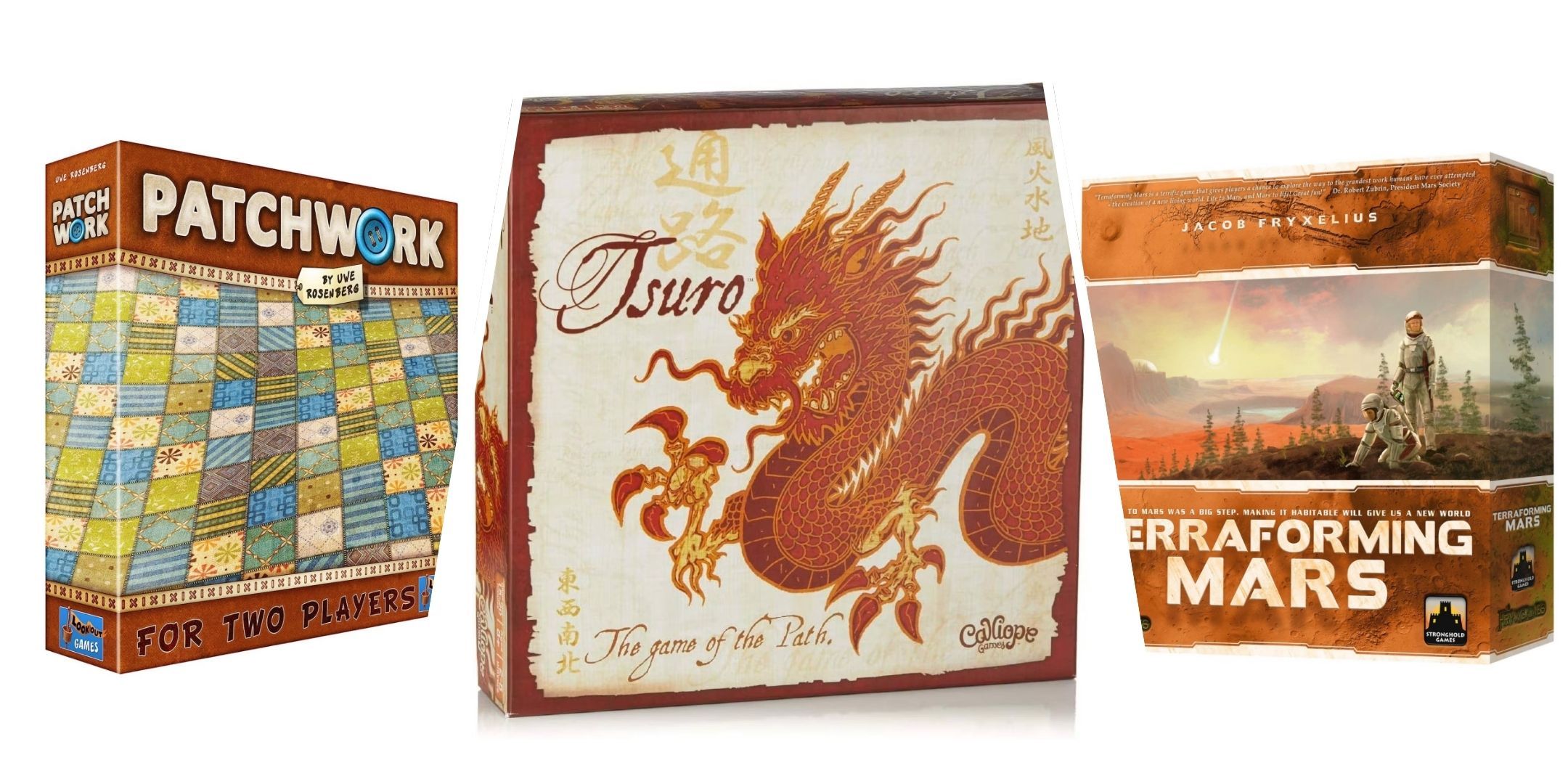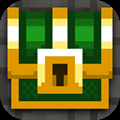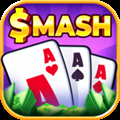
Summary
- Games like Carcassonne and Azul create beautiful landscapes through tile placement, rewarding strategic thinking and balance.
- Cascadia and Kingdomino offer a different take on tile placement, focusing on nature and strategic selection of tiles.
- Patchwork and Bärenpark are themed around quilts and bear zoos, providing a unique twist on the tile-laying genre.
Board games often take place on grids. It’s the simplest way to give visual and mathematical structure to a chunk of space, allowing pieces to move about in predictable, limited ways without anyone needing to break out a ruler. Neat arrangements of squares and hexagons make for gameplay that’s easy to follow and think through without any external tools.
While many strategy games take advantage of this by using a board to regulate how you move pieces, there are just as many excellent games that have you place the tiles themselves—sometimes stacking other things on top of them afterward—in order to create a board that’s advantageous for you. Here are some of the best games that revolve around placing tiles.
Best Medieval GameCarcassonne
Create your own medieval city
Named after a medieval French city, Carcassonne tasks players with laying tiles in such a way as to build large structures and use meeples to claim them. Building large structures is difficult, but it will score you a ton of points if you can pull it off.
Pros & Cons- Simple, learnable gameplay
- Reasonably fast without lacking substance
- Big plays can be very satisfying when you get them working
- Bad luck can make it extremely frustrating
- Big plays are few and far between
We begin with a game specifically designed, in part, to serve as an introduction to modern strategy gaming, Carcassonne. This tile-placement game has players build a largescale medieval landscape, full of castles, churches, roads, and the fields between them, one tile at a time.
It’s a dirt-simple game, with each player drawing a single tile each turn and choosing where to place it. Though this can create frustrating situations when you find yourself never seeming to get the tile you need, it also keeps the game simple for new players. Big moments, when you manage to finish a large castle or long road, are rarer than they should be, but this game can be amazingly satisfying when you manage to pull one off.
Best Nature GameCascadia
Create an astounding natural landscape
Player Count 1-4 players Age Recommendation 10+ Length per Game 30-45 Min Publishing Co Alderac Entertainment Group Material CardboardCascadia is a tile-placement game that charges players with creating their own beautiful natural ecosystem by laying different kinds of terrain tiles and placing animals on top of them. The tiles, the wildlife tokens, their corresponding cards, and the box all contain amazing illustrations.
Pros & Cons- Great Wildlife Art
- Approachable Mechanics
- Easy to learn, difficult to master
Named for the natural beauty of the region of North America in which it takes place, Cascadia has players building a sprawling landscape by placing terrain tiles to create patches of forest, water, mountain, desert, and the like, then placing animals on top of them to create patterns that earn points.
Like many tile-laying games, it does an amazing job being approachable while still having rich strategy. It’s a bit more intricate than Carcassonne, but is still simple enough to be a great place for new gamers to get into the genre.
For more beautiful games, many of which also have players create their own natural landscapes, check out this list!
Best Pathfinding GameTsuro - The Game of The Path
Trace you bath along the board
This absolute masterpiece of a game casts the players as dragons, and tasks them with using its unique tiles to fly around the board for as long as they can. It’s fast and easy to understand, but with plenty of strategy to make it interesting.
Pros & Cons- Short Playtime
- Meaningful Strategy
- Calming Atmosphere
This one is an absolute treasure. Tsuro is a brilliant pathfinding, tile-laying game that casts the players as dragons, and tasks them with creating their flightpath by placing tiles on the board. Whenever a tile is placed in front of your dragon, usually by you, but occasionally not, you must follow it to its conclusion. Using this simple mechanic, you move around the board and try to force players off of it, in hopes of being the last dragon standing.
This game is short—only fifteen minutes or so per playthrough—but it does a wonderful job rewarding strategic and forward thinking. It also does a great job incorporating its tone into its mechanics. This is a game about majestic, peaceful dragons following beautiful, curved paths, and the mechanics reward a passive and avoidant playstyle. Being aggressive is usually a mistake in this game. The best way to win is to avoid your opponents until they all crash into each other on their own.
RelatedBest Board Games For D&D Fans In 2024
D&D fans will love these board games for when you're tired of roleplaying.
Posts Best-Looking TilesAzul
A game about the art of placing tiles
Player Count 2-4 Age Recommendation 8+ Length per Game 30-45 minutesThis intriguing and good-looking game casts the players as artisans creating their own abstract mosaics, struggling to find the best moves and weigh the trade-offs they come with.
Pros & Cons- Simple yet highly strategic gameplay
- Visually appealing
- Finely-crafted scoring system
- Complicated scoring system
- Almost every move comes with a price
Most tile placement games contextualize their tiles in terms of something grander, like the majesty of nature or the craftsmanship of urban planning. In Azul, however, the artistic arrangement of tiles represents nothing more or less than the artistic arrangement of tiles.
That is to say, this game casts the players as artisans creating mosaics, which they do through a relatively abstract and complicated process. There’s no intent here to simulate the actual process of making a mosaic, but that fact leaves this game free to develop its own mechanics, and those mechanics are interesting and finely crafted to make for compelling strategic gameplay.
Best Sci-fi GameTerraforming Mars
This time around, the forging of a landscape isn’t metaphorical
This excellent, intricate tile-placement game casts the players as a wide variety of interesting corporations and has them compete with one another to play the largest role in terraforming Mars, which will entitle them to the largest share of the resulting profits.
Pros & Cons- Loads of interesting, unique corporations
- Appealing gameplay
- Might be too complex for newer players
Terraforming Mars is a science-fiction tile placement game that has each player take on the role of a different corporation—there are dozens to choose from, each with their own abilities and special objectives—and participating in the multi-generational task of terraforming Mars.
Tile placement is only one element of this complex game. There’s also engine-building card-based mechanics to be found, and both they and the tile placement mechanics are constantly interacting with the global parameters that have to be optimized for Mars to be terraformed. It’s a lot to keep track of, but as a result, there’s a lot in this game to sink your teeth into! For more sci-fi board games, check out this list!
Best Tile SelectionKingdomino
Engaging strategic trade-offs
Kingdomino, like Carcassonne, has players build territory for themselves in a medieval landscape. Placing tiles is a part of this game, but the real difference between the winners and losers will be how they balance the strategic selection of them, weighing off their desires for specific tiles against the consequences of being too greedy.
Pros & Cons- Great strategic decisions
- Simple
- Cute Art
Kingdomino is another kingdom-building tile-laying game that has players competing to build medieval landscapes in order to gain points. The tile-laying aspect of this game is pretty simple. You create a small grid and have to lay tiles within it in such a way that their terrain matches that of their neighbors.
What really sets this game apart is the strategic way those tiles are chosen. Each round, the order in which players choose their next tile shifts dynamically based on who chose what in the previous round, forcing players to balance which tiles are best for them strategically with the desire to have a better selection next turn. For more games with a medieval theme, check out our list of the best Fantasy board games!
Comfiest GamePatchwork
Make your own quilt
This cute little game casts you as a quilt-maker, and charges you with crafting your very own quilt, packing Tetris-esque tiles together as tightly as possible in order to win.
Pros & Cons- Well-crafted mechanics
- Nice Art
- Great balance keeps things tense all game long
- The quilts have buttons, which is weird
Another game that casts you as an artisan, Patchwork has you crafting your very own quilt made of variously-shaped collections of squares, which you must place onto a square grid. There are a couple of different ways this game gives you points, but they all revolve around finding good ways to fit your patches snugly onto your quilt.
Making your pieces fit together is the key to victory here. A board full of tightly packed pieces, with no space wasted, will get you the points you need to win. A board full of holes will cost you the game. You and your opponent are constantly competing for options, and you have to think ahead and be adaptable if you’re going to win.
Best ThemeBärenpark
Has anyone ever actually seen a zoo filled exclusively with bears?
This oddly specific yet masterfully designed tile-laying game charges players with building their own bear-themed zoo by filling it snugly with tiles of different shapes. This game rewards forward thinking, and its expanding zoos keep things from getting too congested too quickly.
Pros & Cons- Finely-crafted design
- Minimal luck
- Simple & Learnable
- It can be frustrating when you find yourself unable to fit more tiles.
Yet another game about fitting Tetris tiles snugly onto your personal board, Barenpark’s various pieces represent enclosures and other structures in your very own bear zoo. Why you and your opponents are building a zoo exclusively for bears is unclear, but the tile-laying experience that results is excellent.
Unlike in Patchwork, your personal board will expand a few times over the course of the game. It starts out small, so making things fit is never too easy, but it keeps getting bigger, so it doesn’t get too difficult too quickly. This keeps the game engaging throughout.
1 FAQ
What is the German game with tiles?
Odds are, you’re thinking of Carcassonne. Though it is named after a French settlement, the game was originally created and published in Germany.
What is the game with black and white circle tiles?
You’re probably thinking of Go. Go is a classic board game—about 2500 years old—that has players lay black and white stones on a square grid. Obviously, Go is far older than the popularization of tile-placement games as a genre, though there is an argument to be made that it’s technically a tile-placement game.
NextBest Board Games Without Dice In 2024
These board games don't need any dice.
Posts












